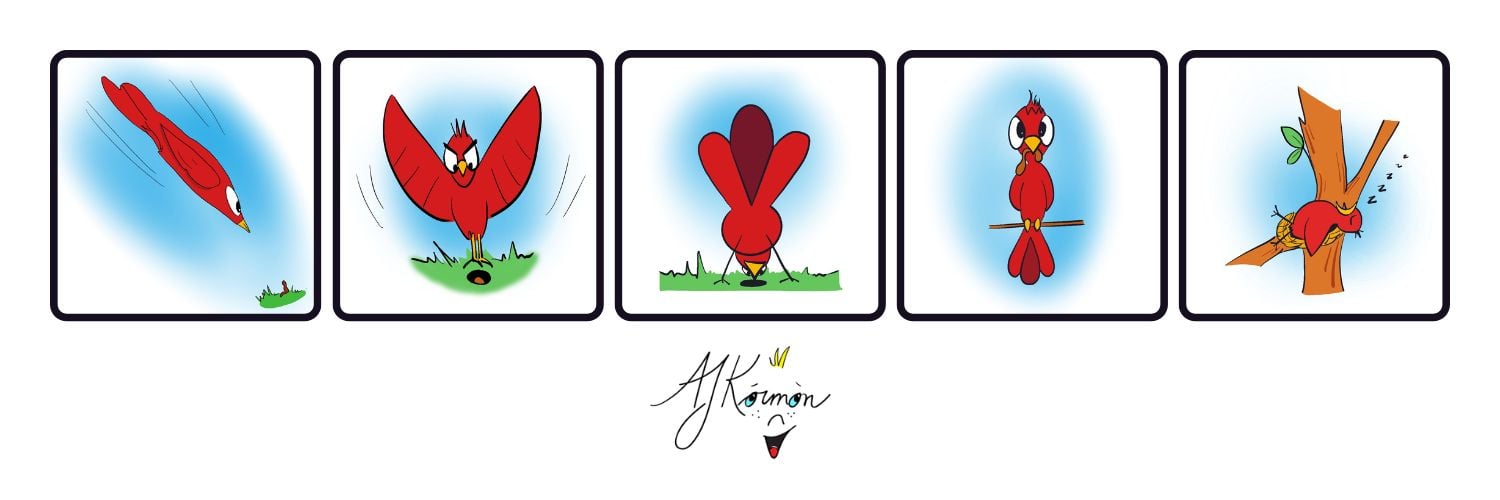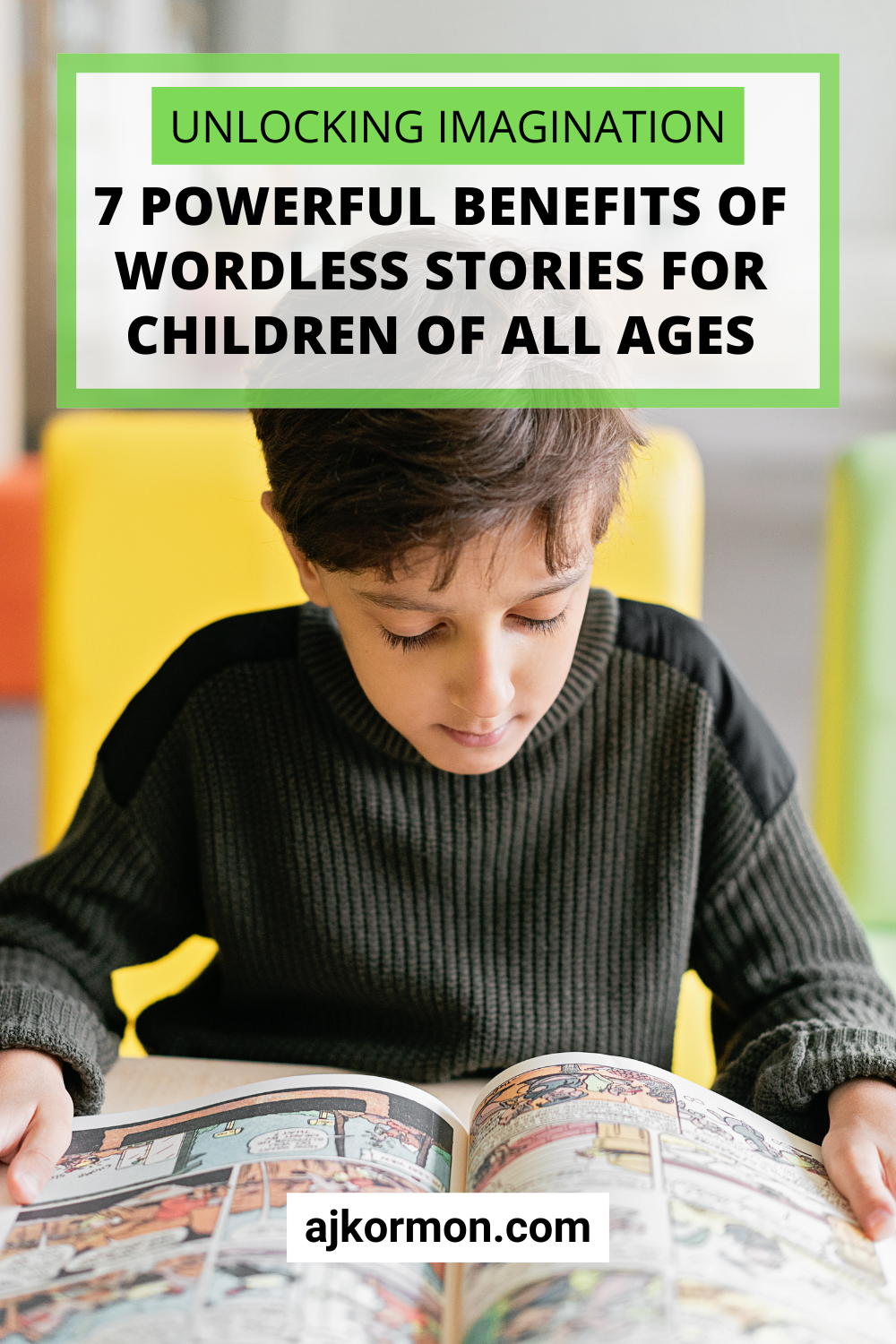This month, I joined The Studio at Kids Comics Unite (KCU). It's an online membership for authors and illustrators aimed at helping us improve our skills for writing comics and, more specifically, graphic novels. Each month includes a challenge and February's is to create a four-panel comic.
I'm still working on my four-panel comic, but I thought I'd share a five-panel, wordless comic I create a couple of years ago. This got me thinking about wordless comics. Obviously, without any words, they won't help children learn to read, but there are plenty of other benefits offered by wordless stories. First, here's my simple bird comic. I originally created it as part of a pattern collection for surface pattern design, but I think it works even better as a comic.

Let's dig into the benefits of wordless stories. The following benefits apply to all wordless stories, not just comics.
- Promotes visual learning: Wordless stories help children interpret and understand visual cues, an essential skill in today's image-rich world. By analyzing the story through images alone, children learn to pay attention to detail and understand narrative structure without relying on text.
- Encourages Imagination and Creativity: Without written language to guide them, children invent their own dialogue and narratives, which can lead to wildly creative and diverse interpretations of the same story. This not only bolsters creativity but also encourages children to see themselves as storytellers.
- Supports Language Development: Even in the absence of written words, discussing a wordless story can enrich a child's vocabulary and language skills. Parents and educators can ask open-ended questions about the story, prompting the child to describe what they see, hypothesize about what might happen next, and even invent dialogue for the characters.
- Builds Confidence in Early Readers: For children just beginning to read, wordless stories can be a confidence booster. They provide a storytelling experience that doesn't require reading proficiency, allowing children to enjoy a book on their own or with minimal help. This sense of independence can be motivating for early readers.
- Enhances Emotional Intelligence: By interpreting characters' actions and expressions without the aid of text, children can develop empathy and a deeper understanding of emotions. This can help them better navigate their own emotions and understand those of others.
- Universal Accessibility: Wordless stories transcend language barriers, making them accessible to children regardless of their language skills. This universal appeal makes them an excellent tool for diverse classrooms and multilingual families.
- Fosters Parent-Child Bonding: Sharing a wordless story provides a unique opportunity for bonding. Each reading can yield new stories, as parent and child build narratives together. This shared storytelling not only strengthens relationships but also enhances communication skills.
As you can see, some of the benefits of wordless stories aren't too different from the benefits of stories with words. I love both types of stories, but I do find the wordless ones more difficult to create. Hopefully my time in the KCU Studio will help with that.
I hope you'll give wordless stories a try if you haven't yet. If you have, I'd love to know in the comments below what some of your favourite things about them are!




Comments ()